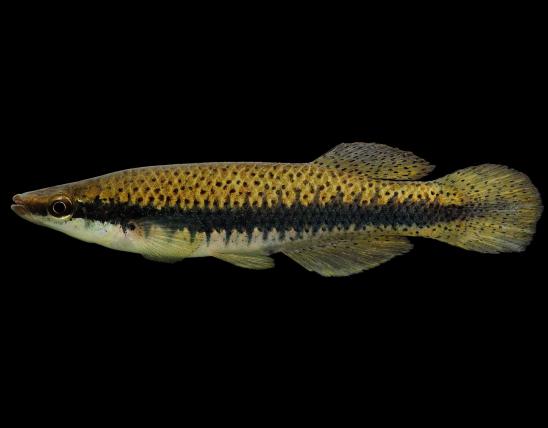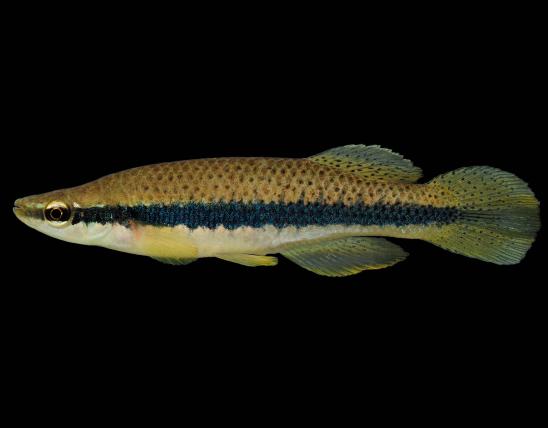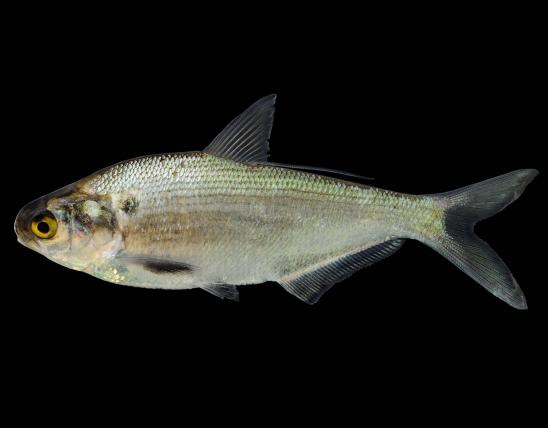
The northern studfish is a sleek, swift topminnow with a slender, elongated shape. Topminnows have a general habit of skimming along just beneath the surface of the water, so the top of the head and forward part of the back are broad and flat, and the mouth is tilted upward so it opens at the upper surface of the head. The body is long, there is no lateral line, and the single dorsal fin is located far back over the anal fin. The tail fin is rounded. None of the fins have spines.
In overall color, the northern studfish has silvery or brownish sides with numerous horizontal streaks and dashes.
Males in breeding condition are among the prettiest of our native topminnows. Males in spawning coloration have electric blue sides with horizontal red lines; their heads and fins are decorated with reddish spots; their paired fins are lemon yellow; their tail fin has a broad orange fringe, often with a black band.

Habitat and Conservation
Food
Life Cycle
Human Connections
Ecosystem Connections





























